My daughter caught a fever, and then passed it on to me. The last week has been a struggle. Tired, achy, spitting out green flem, and sneezing has been terribly uncomfortable. Hopefully I’m at the tail end of this nightmare. But it’s been a real slog to get anything out. Sorry.
The USN Admiral of the Pacific was asked by Joe Biden if the USN was ready to counter China….just in case. He responded that they are ready and would win a war against China.
WTF?

The guy is either delirious, or seriously demented.
Sorry about last post about #passportbros. The entire things is so disheartening. I see the pain of the African American women, and I feel the pain of the African American men. I just want everyone to find their love, and build up a family.
Is that too hard?
Couple that with the Woke Movement banning and suppressing all videos, posts and writings about that content. WTF? Makes it really difficult to communicate when others want you to shut the fuck up.
I really need to put out a Paetron video, but this last fever has set me back. Ugh!
My affirmations are manifesting strong and hard. Things are definitely falling into place. Slow hard grind, but actually happening.
A commenter asked about why I “felt the need” to send someone to the Cornfield. I did it, because I have an ego, and I no longer “turn the cheek”. If you wrong me, I hit back hard.
Now, take care, and have a great day!
Japan has officially announced that it will tighten controls on exports of 23 types of semiconductor equipment to China starting July 23. How the new trade curbs will impact Chinese semiconductor industry is drawing increasing concerns from market and industry observers.
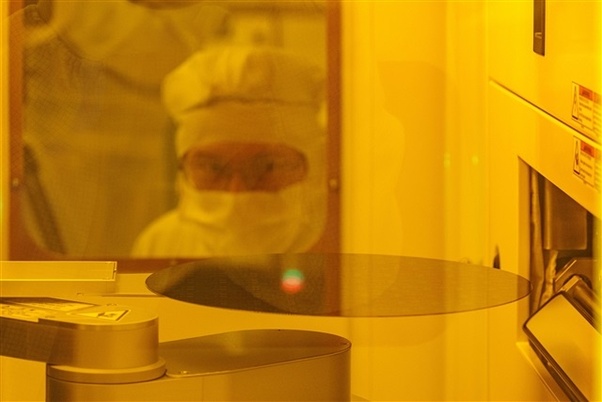
Japan will strictly restrict shipments of four types of exposure machines, three kinds of etching equipment, 11 film-forming machines, three cleaning equipment items, one thermal treatment system, and one front-end test solution, all needed to produce 14nm chips and more advanced ones.
Chinese Commerce Minister Wang Wentao urged Japan to halt semiconductor export controls, calling it a “wrongdoing” that “seriously violated” international economic and trade rules. He issued the call during talks with Japanese Trade Minister Yasutoshi Nishimura on May 26 at the Asia-Pacific Economic Cooperation (APEC) conference in Detroit, three days following Japan’s announcement.
How large the impact of Japan’s trade curbs will be on China’s semiconductor industry?
The South China Morning Post also quoted a semiconductor analyst at Counterpoint Research as saying that Japan’s increasing cooperation with the US in tightening exports of advanced semiconductor equipment and technologies to China will heap large pressure on Chinese semiconductor players, given that Japan was China’s largest supplier of semiconductor equipment in 2022 as indicated in the United Nations merchandize trade statistics.
The analyst said that China is now capable of producing 14nm chips, yet in a small volume, and that Japan joining hands with the US to contain China will make it difficult for Chinese foundry houses to increase output of sub-20 nm chips.
Japan’s Diamond Weekly reported that five Chinese semiconductor firms will bear the brunt of impacts from the Japanese trade curbs, namely SMIC, Hua Hong Semiconductor, Huali Microelectronics, Yangtze Memory Technologies (YMTC) and ChangXin Memory Technologies (CXMT).
Meanwhile, as Chinese semiconductor companies are shifting production focus to non-advanced chips, they have placed increased orders with Japanese suppliers for equipment needed for producing semiconductor power devices, analog chips and other lower-end chips.
Tokyo Electron, for instance, saw its sales in the China market grow 11% on year to JPY131.3 billion (US$937.05 million) in the first quarter of 2023, and its president Toshiki Kawai has estimated the company’s shipments to China in fiscal 2023 (April 2023 to March 2024) will contribute over 30% of its annual revenues, up from 23% of a year earlier.
Please note that both China and Japan are the signatory members of RCEP – a free trade bloc.
China will knock the WTO door, but to what effect. It takes 2–3 years for hearing and verdict, but there is also a big hurdle as the US is not appointing appellate judges, hence nothing will come off it. For roughly two years, the US has blocked the appointment of new judges to the WTO’s Appellate Body.
US voting numbers are significant everywhere, as in WTO, IMF and WB. This way it is able to bully and hold these organizations to ransom.
INTERVIEW: All I know is that Gonzalo was detained on May 1
An Opinion by 𝗣𝗿𝗼𝗳𝗲𝘀𝘀𝗼𝗿 𝗗𝗲𝗻𝗻𝗶𝘀 𝗘𝘁𝗹𝗲𝗿
𝘈𝘮𝘦𝘳𝘪𝘤𝘢𝘯 𝘱𝘰𝘭𝘪𝘵𝘪𝘤𝘢𝘭 𝘢𝘯𝘢𝘭𝘺𝘴𝘵 𝘸𝘩𝘰 𝘩𝘰𝘭𝘥𝘴 𝘢 𝘥𝘰𝘤𝘵𝘰𝘳𝘢𝘵𝘦 𝘪𝘯 𝘢𝘯𝘵𝘩𝘳𝘰𝘱𝘰𝘭𝘰𝘨𝘺 𝘧𝘳𝘰𝘮 𝘵𝘩𝘦 𝘜𝘯𝘪𝘷𝘦𝘳𝘴𝘪𝘵𝘺 𝘰𝘧 𝘊𝘢𝘭𝘪𝘧𝘰𝘳𝘯𝘪𝘢, 𝘉𝘦𝘳𝘬𝘦𝘭𝘦𝘺
As I See It:
Why is it that the West is so preoccupied with China? The usual answer is that China’s economic growth is challenging Western global hegemony which has held sway for at least 250 years. The Chinese military has also reached parity with that of the West, so it is no longer subject to Western intimidation and bullying. All that is true and reason for the West to want to savage China and portray it as the root of all evil.
But there is one other consideration that must be considered. It’s not only China’s economic prowess and military might that frightens the West, but also success as a nation versus the West’s failure.
Moreover, China has forged a society in which there is harmony between its different ethnicities in contrast to the systemic racism that characterizes Western society.
Western ruling elites and their media mouthpieces do not want to acknowledge the fact that China has eliminated extreme poverty while more and more of their own people descend into poverty. They do not want to admit that China has constructed a 21st century infrastructure while they lag far behind. They do not want to confront the fact that the Chinese people overwhelmingly support their government while people in the West have lost confidence in their own, they do not want to accept that China beat COVID-19 while they haven’t, and finally they are loathe to accept the fact that a non-white nation has outperformed them and will continue to do so into the foreseeable future.
In order to deflect attention away from these truths the West has concocted a series of lies and slanders that allow them to deny reality. Instead of poverty alleviation the West imagines “genocide.” Instead of the advances in HSR, EVs, alt-energy and e-commerce they focus on “IP theft,” instead of a socioeconomic system that serves the people, they accuse China of forced labour and forced sterilizations. Instead of seeing China as defending its national sovereignty in the South China Sea, Hong Kong, and Taiwan, it’s called an aggressor.
All the China-bashing serves multiple purposes but ONE of the main reasons is to make sure that people in the West do not get to hear nor see what the real China is all about because if they did they may get ideas that the Western elites don’t want then to have, such as socialism works for the betterment of the 99% while capitalism works primarily to enrich the 1%.
What Happened to the First Human Head Transplant?
This is interesting.
10 Ways Life Really Sucked in the Middle Ages
The Middle Ages lasted a long time… and probably felt even longer. Historians generally recognize the period as beginning with the fall of Rome at the end of the 5th century AD. Then, it lasted all the way through the middle of the 15th century—give or take a few decades. As you might imagine, quite a few things changed during this long cultural epoch. But there was at least one constant then, too: life really, really sucked.
There were only a few hundred million people on the entire globe—with less than 25 million in Europe–when the Middle Ages started, and those poor souls had it rough. Medicine was essentially nonexistent, and disease was rampant. Life was short, violent, uncertain, and occasionally brutal. Work was hard, the hours were long, and the physical toll was demanding. Civilization was sputtering along, and if you weren’t rich royalty, you got the proverbial (and sometimes literal) short end of the stick.
So let’s head back in time and take a long look at why life in the Middle Ages was so terrible. There will be famine, pestilence, and disease. There will be violence, starvation, political strife, and community turmoil. And there won’t be much hope! Here are ten reasons why it was really, really bad to be an Average Joe during the Middle Ages.
10 Pestilence and Plague
Back in 1347, the bubonic plague—which soon became known as the Black Death—arrived in Europe. It caused immense devastation almost immediately. Over the next decade, it took the lives of millions of people. Historians now estimate that around twenty million were felled by the disease. And there weren’t nearly as many people in Europe then to begin with as there are now. In just a few years, almost half of Europe’s population perished.
The Black Death was a merciless killer. People would go to sleep healthy at night, wake up deathly ill in the morning, and die in an agonizing way over the next several days. It didn’t discriminate between the rich and the poor, and it was ruthless. In fact, scientists now estimate that only about 10% of those who contracted the disease managed to survive. Families were devastated, and entire towns were nearly wiped off the map.
It changed the structure of European society in a way that is difficult to understand today. While the Middle Ages were already tough on regular people, all that death made things even more difficult. Children were orphaned, and families were fractured. Already nearly nonexistent social and community outlets were completely shuttered.
People were on their own even more than they’d been for centuries before that. And they attributed the plague’s wrath to a vengeful God hell-bent on punishing the world for its sins. It may have been difficult for the modern world to battle the COVID pandemic, but it was nothing compared to the plague. In just a few years, in the late 1340s, European society completely regressed.[1]
9 Live Terribly, Die Fast
As you’ve come to see by now, life was tough in the Middle Ages. Even if you managed to stay away from hunger and the awful Black Death, there were still many ways to meet a gruesome end. Diseases like tuberculosis, leprosy, and cholera were everywhere. Basic cleanliness was hard to find. Nobody knew anything about hygiene. And in cities like London, there was no sewer system to speak of. Instead of disposing of excrement and human waste in a sensible way, they simply threw it onto the streets. Gross, right? Not only did it stink horribly, but it also created a terrible breeding ground for deadly diseases.
Knowledge about medicine was remarkably primitive, too. People in those times believed bad smells directly caused diseases. This idea was called the Miasma Theory, and it became quite popular across Europe. Of course, it wasn’t true, but it did make people realize the importance of being clean and taking baths. That, in turn, helped improve health conditions a little bit. Of course, the improvement was not felt by all classes. Rich people had the means and opportunity to stay clean and smell relatively fresh if they wanted. But for the serfs, who usually lived in cramped spaces with multiple families and even livestock, it was much harder.
Surviving childhood was a challenge back then too. Only about a third of all kids born in that era reached adulthood. Giving birth was also extremely dangerous, as you might expect. Mothers, babies, or both often didn’t make it out of childbirth alive. Across society at that time, the average life expectancy was only around 35 years. Men usually lived a little longer than women—and the rich, of course, often lived much longer than the poor. Still, it’s pretty shocking that giving birth was more risky than going into battle during medieval times. Life was very, very hard back then![2]
8 The Relentless Waging of War
During the Middle Ages, there was a great deal of fighting happening pretty much all the time. Some wars were short and violent, while others, like the 100 Years’ War, lasted way longer than expected. Because militaries lacked modern weapons, it often took decades for wars to finally and definitively end. Thus, everyone who was able to fight had to constantly be ready for battle. The nobles, especially, spent most of their lives training for war. Whenever a war broke out, it was their duty to show off their skills. If they didn’t want to fight, they had to pay the king a large amount of money to avoid battle.
Of course, the vast majority of people in the Middle Ages didn’t have enough money to buy their way out of the conflict. So they could be forced to join the army through conscription. If you owned any land, you could be summoned to provide soldiers for the war effort. The more land you had, the more soldiers were expected from you. The poor peasants, who had little or no military training, were usually the ones sent into battle by these powerful landowners. They were led by a knight or two who tried their best to bring some order to the chaos.
Some leaders recognized that having a well-trained and organized peasant army could be helpful in a fight. However, the rulers were also afraid that if these peasants became too skilled, they might rebel and try to overthrow them. This back-and-forth was the central tension around military might throughout the difficult Middle Ages.[3]
7 The Cruelty of Crime
During the Middle Ages, violent criminals and thieves faced severe consequences if caught. And there were numerous petty problems that received cruel and unusual punishments too. Being a vagrant or getting caught begging was against the law in most European locales. Peasants were forbidden to marry without their lord’s permission. And in some places, women could even be punished for gossiping too much! Surprisingly, even playing football became illegal in England in 1314. Thankfully for our British friends, that didn’t last long.
In the early part of the Middle Ages, determining guilt or innocence involved a brutal practice called trial by ordeal. For example, if a woman was suspected of witchcraft, she might be tied up and thrown into a pool of water. If she survived, people would believe she was innocent. If she died, they assumed she was guilty. Considering she had already been tied up before being thrown in, well, you can guess how many “guilty” witches there were.
As time passed, trial by jury started to replace trial by ordeal from the 1300s onward. However, punishments during this era were still incredibly harsh compared to today’s standards. Public executions were common, as were floggings and beatings. Corporal punishment and forced labor were routinely levied against criminals and evildoers as well. Even petty crimes like thievery and pickpocketing were given harsh retribution.
One of the most dreadful crimes one could commit was high treason. Betraying one’s king was such a heinous act that it resulted in an unimaginably cruel punishment. The condemned person would be tied to a wooden panel and dragged toward execution. They would be hanged, but they would be cut down just before death. Yet there was no mercy in this act. While fully conscious, the person would be disemboweled, and their entrails would be burned before their eyes. Finally, an ax would be swung to sever their head from their body. Then, in what served as a brutal warning to others, their head would be displayed for all to see.[4]
6 Brutal Feudal Life
Life in the Middle Ages was divided into different classes. As has been the case in most eras, those at the top had a pretty good life. They were the ones with power, money, and high status. In most Middle Ages communities, the king technically owned all the land in an area. He would lease it out to noble barons in exchange for an oath of their loyalty. Then, these nobles had the freedom to govern their land and impose taxes as they pleased. As you might expect, they could be brutal.
This privilege for the few landed barons came at a great cost to the serfs. This was the poor mass of people who had no land and no rights. They were essentially treated as slaves by the local nobles. Serfs toiled on the land and brutally worked six days a week from dawn until dusk. Per the feudal system, they were forced to produce crops, raise livestock, and offer some other value to pay their liege lord for the use of the land. And the grind never ended.
In ancient times, it was rare but possible for slaves to rise to powerful positions. Some former slaves became incredibly wealthy and led armies. In one notable instance, the son of a freed slave even became the Emperor of Rome. Sadly for the serfs in the medieval world, such social mobility was unimaginable.
If you were born into the lower class, it was extremely likely you would remain there for your entire life. There was no social mobility or opportunity to work through one’s birth position. Instead, the poor, unwashed masses simply kept working hard and toiling away with no chance of ever improving their lives.[5]
5 Medicine? What Medicine?
Around 540 BC, a Greek doctor named Alcmaeon of Croton introduced a concept that gained popularity in his time. He believed human health depended on the balance of four fluids, known as humors. These humors were blood, phlegm, yellow bile, and black bile. Alcmaeon’s theory was wrong, of course, but it managed to stick around for a thousand years.
By the Middle Ages, medicine hadn’t progressed beyond this point. In some ways, sadly, it had even regressed. Unlike the ancient Greeks—who acknowledged physical causes for illnesses—people in medieval times attributed supernatural reasons to their ailments.
It was quite common for medical examinations to begin with an analysis of the patient’s astrological chart. In many cases, the diagnosis would be an imbalance of the humors. The prescribed treatment involved either bloodletting through cuts or the application of leeches. There were no antibiotics or other medicines, of course. The primitive nature of pain management and symptom care at the time was brutal and unforgiving.
Those who required surgery faced even greater risks. Limited knowledge of the human body’s internal workings hindered progress. Out of fear of superstition and disease, dissecting corpses was prohibited. Moreover, physicians deemed surgery as beneath their profession. That left the task to even less-trained barber surgeons. These individuals were often illiterate and lacked formal scientific know-how. Their only qualification was generally their labor as barbers. Theoretically, then, they knew their way around scissors and (potentially) a scalpel.
The sole available anesthetics were alcohol or certain herbs like mandrake. Shockingly, many surgeons didn’t even employ these methods. They mistakenly believed pain actually aided the healing process. Then, those unlikely few who survived surgery were at substantial risk of infection and subsequent death during the following days and weeks. Sadly, there was no winning in medieval medicine.[6]
Let’s see the European Union and their members continue to expose themselves as the Anglo-Naxi backed fascist experiments that they are by ignoring their own people
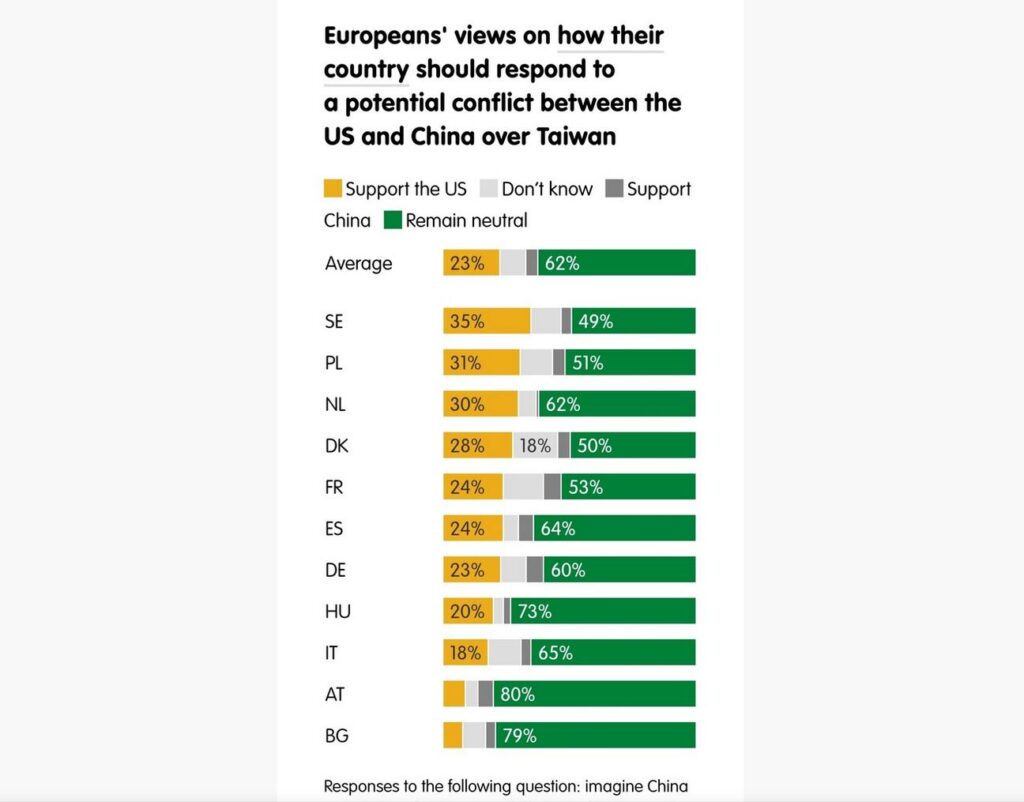
4 Work? What Work?
During medieval times, most people lived and worked on farms. Historians now estimate that about 80% of the population tended to the land. However, as towns and cities grew, new job opportunities arose. Sadly, many of these occupations were poorly paid, required a ton of time and effort, and were extremely unpleasant.
One unusual job that became popular was that of a leech collector. The medical profession had a constant need for leeches at the time. So this created an opportunity for people to make a living by gathering the bloodsucking creatures. Catching leeches was not an arduous task, but it was gross. Collectors would simply enter a suitable body of water and wait for the leeches to attach themselves to their bodies.
Another job that offered slightly more income was that of a fuller. Fullers were more common than leech collectors, and they could earn three times as much as a peasant working in the fields. However, being a fuller was far from ideal. Their responsibility was to remove oil, dirt, and other impurities from newly woven cloth. The most effective method they used was stomping on the cloth with their feet inside a barrel filled with human urine. This process would go on for hours and hours, dawn until dusk, six days per week.
As the importance of cities grew through the end of the Middle Ages, more jobs away from the farm took on various levels of significance. Through it all, though, labor protections were nonexistent, and wages were mostly terrible. People had to make the best of the opportunities presented to them, even if they weren’t exactly what they had dreamed of. There simply wasn’t anything better on hand![7]
3 One-Way Worship
During medieval times, the Catholic Church held immense power and influence across Europe. It had great wealth and authority too. For one, it was exempt from taxes. And yet it compelled peasants to pay a tithe of 10% of their earnings to the church. Additionally, peasants were obliged to dedicate their time and labor to the church’s lands without compensation.
The vast resources and political strength of the church allowed it to permeate nearly every aspect of medieval society. Because they had such soft power, worship was essentially forced. After all, who would mount a fight against an organization with that much of an ability to ruin your life?
As the leader of the church and the earthly representative of God, the pope held a level of power that rivaled, and often surpassed, most of Europe’s monarchs. Although popes did not directly command armies, their influence was so significant that they could call for crusades. Those violent wars were fought again and again versus Muslim soldiers across the Holy Lands. Of course, the numerous Crusades have become notorious in history for their extreme bloodshed. Centuries of fierce fighting caused the brutal loss of millions of lives.
In medieval Europe, the Islamic and Christian worlds were largely distinct. The majority of European people were devout Roman Catholics—or at least they claimed to be. However, there were small populations of pagans, Jews, and individuals following other teachings. They just couldn’t be too open about their faith.
These religious minorities faced the constant threat of persecution and death due to their unpopular belief systems. Because of the sheer dominance of the Catholic Church, diversity in religious practices existed at great risk to those who dared to differ. Worship was very power-driven from the top down in the Middle Ages, and if you went against it, you literally risked your life.[8]
2 Woes for Women
Life during the Middle Ages was challenging and unjust in many ways. Sadly, this was particularly true for girls and women. For centuries, they found themselves stuck in a society dominated by men. In those days, women had very limited rights. Until they got married, they were essentially the possessions of their fathers. Once they married, their ownership would transfer to their husbands.
If a woman was attacked, harmed, or killed, the focus would often be on her husband as the unfortunate victim. That was because the husband was seen as the one who suffered the loss or damage to his wife as property. Pregnancy and childbirth were awful too. Women routinely died while giving birth to babies. Without anything close to proper medical knowledge, pregnant women and mothers were at the mercy of fate in an uncaring and cruel world.
Through it all, women were primarily viewed as child bearers and raisers. However, female peasants were still expected to toil in the fields. Sadly, they received much lower pay than men, even though they performed the same labor. Then, after work, they were still expected to do domestic duties and care for children.
Despite these obstacles, a small number of women managed to defy expectations and attain positions of power and influence. In certain instances in England, women were granted special licenses that permitted them to operate their own businesses. They could also inherit wealth under specific circumstances. But those women were the very rare privileged few. For the vast majority of women during the Middle Ages, life was a joyless slog.[9]
1 It Was a Cold, Cold Time to Be Alive
The history of human civilization spans about 6,000 years. Across this journey, humans have been fortunate to experience relatively stable and pleasant temperatures. But not every decade has had it equally easy. Around 1300, a significant drop in the global average temperature occurred. For several centuries, it caused a temperature decline of approximately 2-3 degrees Fahrenheit (1.5 degrees Celsius). That may not seem like a lot, but it lasted a long time. And it was worse in some places (like Europe) than in others. Across northern Europe, cold languished for generations.
This prolonged cooling period was so significant that weather historians now know it as the Little Ice Age. As you might expect, its impact on Medieval Europe and other nearby regions was devastating. Frozen rivers and harbors persisted for months, crops failed, and tens of thousands of people perished due to famine and mass starvation. As if all these other things about living in the Middle Ages weren’t bad enough, the cold was the proverbial icing on a really crappy cake.
Scientists now know the Little Ice Age came from a combination of volcanic eruptions and solar activity. But during the Middle Ages, superstition prevailed. People held what we now consider to be primitive beliefs about the cause of natural phenomena. Some of them attributed these cold weather events to a vengeful God. Others claimed it was the machinations of magic and evil witches. The drastic temperature decline exacerbated religious persecution during the era. In turn, it greatly contributed to the prevalence of witch burnings and mass violence.[10]
Man Has Weird Round Spots On Finger When The Doctors See It They Call The Cops
This is also interesting, and freaky!
https://youtu.be/FgeBLbiPF9k
Tex-Mex Chili Dip
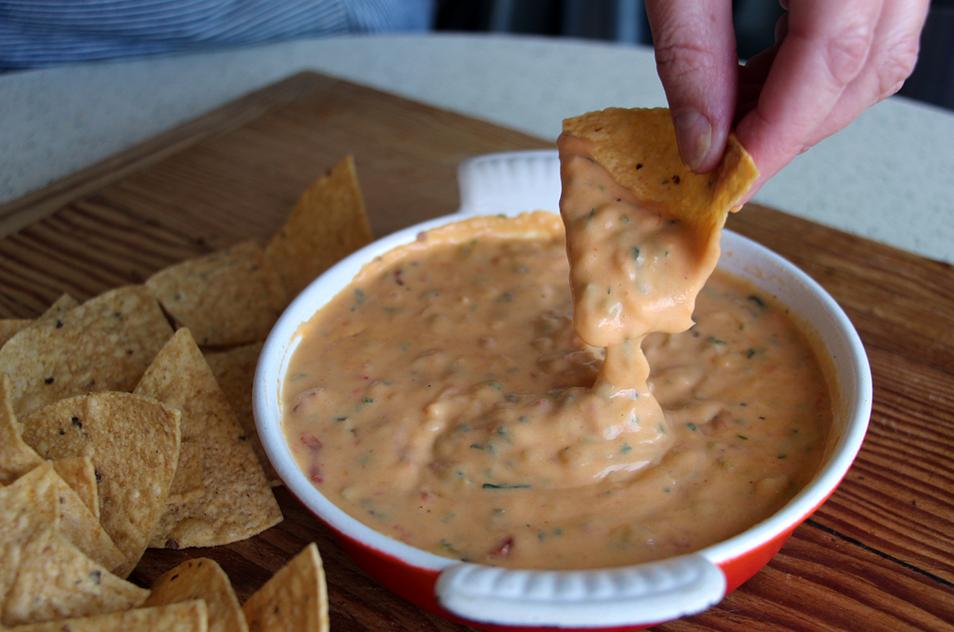
Ingredients
- 1 pound lean ground pork or beef
- 1 (16 ounce) jar chunky salsa (2 cups, mild, medium or hot, depending upon preference)
- 1 cup water, divided
- 1 (1.61 ounce) package brown gravy mix (no fat or regular)
- 1/2 teaspoon ground cumin
- 1 (15 ounce) can black beans, rinsed and drained
- 1 to 2 teaspoons finely chopped jalapeno pepper (optional)
- Tortilla chips or crackers
Instructions
- In 2-quart saucepan or large skillet; cook and stir ground pork until meat is no longer pink, then drain.
- Add salsa and 1/2 cup water and heat to boiling.
- Meanwhile, in small bowl, blend gravy mix with 1/2 cup cool water; stir in cumin.
- Pour gravy mixture into boiling mixture. Heat and stir until thickened.
- Stir in beans and jalapeno, reduce heat and simmer 10 minutes.
- Transfer hot dip to heated server.
- Garnish with fresh cilantro leaves, if desired.
- Serve with tortilla chips.
Makes 10 to 12 servings.
Chili Dip Quesadillas: Spread dip on flour tortillas; sprinkle with shredded cheese. Place another flour tortilla over each. Cook on hot griddle for 2 to 3 minutes per side. Cut into quarters.
DAVY KNOWLES w/ Jeff Massey & Eric Saylors (Steepwater), march 2017
What western media will never cover.
30 officials from 16 Arab nations have visited Urumqi and Kashgar, Xinjiang Autonomous Region in a tour to witness social harmony, economic prosperity, the fact that muslims have full rights to practice their faiths from May 30th to June 2nd, the Arab League was accompanied by XAR party secretary Ma Xin Rui, XAR chairman Erkin Tuniyaz whom the west smeared for “defending genocide” last year and Diplomatic Ambassador Li Chen.
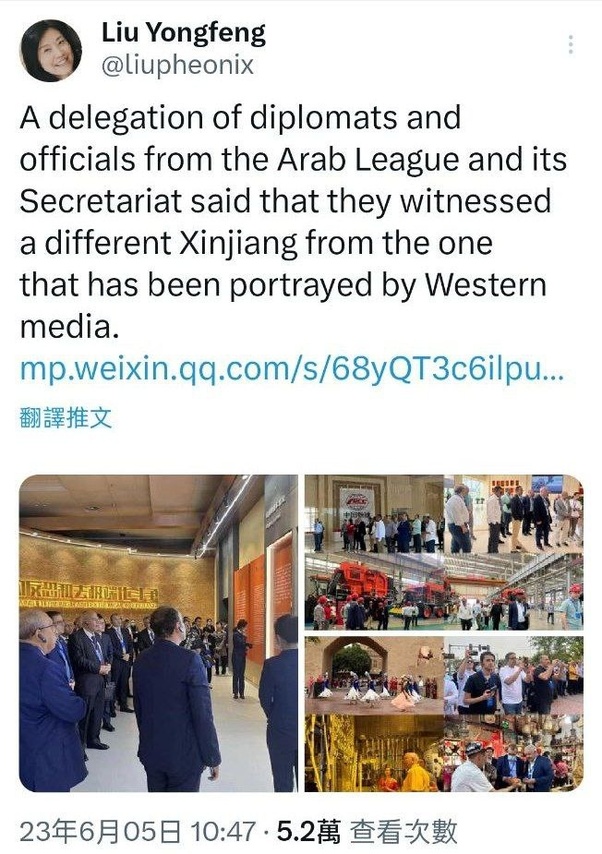
Should Chinese people be careful around other Asians these days since there is so much anti-Han-Chinese sentiment and hostility from other Asians?
Hi, Rory Coates. Thanks for the very interesting question!
I don’t think Chinese need to be careful around other Asians at all.
Just before the New Year, I took a 2-week trip to South Korea to visit an old Korean friend, whom I’ve known for more than a handful of years now.
Here is a picture we took of the first sunrise in 2023, as seen on the southern coast, in Yeosu city.
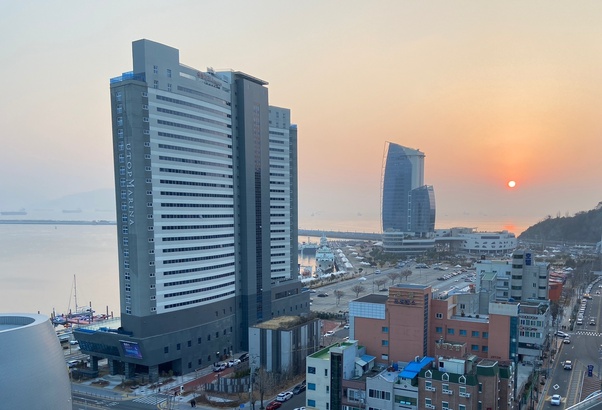
This is a regular and hearty meal we had at Yeosu, with fish as the main dish of the meal.
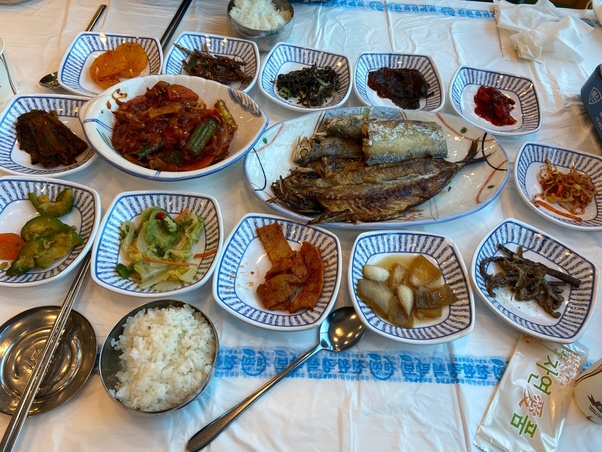
And this is Yeosu’s famous soysauce crab dish.

I greatly enjoyed the time I spent with my friend during my 2-week trip to South Korea. We had a fantastic time just catching up and eating some really, really delicious meals.
Being “careful” around other Asians because I am Chinese was the very, very last thing on my mind!
It was a really wonderful time catching up with a dear friend and enjoying the local scenery and food. Did my soul a world of good it did!
Tradwifes -TikTok’s Traditional Lifestyle Trendsetters
Well, it started with #passportbros, now we have #tradwifes.
https://youtu.be/mXM2rJ6G6gE
Heartwarming story
– especially for Simon and Garfunkel lovers like me . . . . .
“Hello darkness, my old friend…” Everybody knows the iconic Simon & Garfunkel song, but do you know the amazing story behind the first line of The Sounds of Silence?
It began 62 years ago, when Arthur “Art” Garfunkel, a Jewish kid from Queens, enrolled in Columbia University. During freshman orientation, Art met a student from Buffalo named Sandy Greenberg, and they immediately bonded over their shared passion for literature and music. Art and Sandy became roommates and best friends. With the idealism of youth, they promised to be there for each other no matter what.
Soon after starting college, Sandy was struck by tragedy. His vision became blurry and although doctors diagnosed it as temporary conjunctivitis, the problem grew worse. Finally after seeing a specialist, Sandy received the devastating news that severe glaucoma was destroying his optic nerves. The young man with such a bright future would soon be completely blind.
Sandy was devastated and fell into a deep depression. He gave up his dream of becoming a lawyer and moved back to Buffalo, where he worried about being a burden to his financially-struggling family. Consumed with shame and fear, Sandy cut off contact with his old friends, refusing to answer letters or return phone calls.
Then suddenly, to Sandy’s shock, his buddy Art showed up at the front door. He was not going to allow his best friend to give up on life, so he bought a ticket and flew up to Buffalo unannounced. Art convinced Sandy to give college another go, and promised that he would be right by his side to make sure he didn’t fall – literally or figuratively.
Art kept his promise, faithfully escorting Sandy around campus and effectively serving as his eyes. It was important to Art that even though Sandy had been plunged into a world of darkness, he should never feel alone. Art actually started calling himself “Darkness” to demonstrate his empathy with his friend. He’d say things like, “Darkness is going to read to you now.” Art organized his life around helping Sandy.
One day, Art was guiding Sandy through crowded Grand Central Station when he suddenly said he had to go and left his friend alone and petrified. Sandy stumbled, bumped into people, and fell, cutting a gash in his shin. After a couple of hellish hours, Sandy finally got on the right subway train. After exiting the station at 116th street, Sandy bumped into someone who quickly apologized – and Sandy immediately recognized Art’s voice! Turned out his trusty friend had followed him the whole way home, making sure he was safe and giving him the priceless gift of independence. Sandy later said, “That moment was the spark that caused me to live a completely different life, without fear, without doubt. For that I am tremendously grateful to my friend.”
Sandy graduated from Columbia and then earned graduate degrees at Harvard and Oxford. He married his high school sweetheart and became an extremely successful entrepreneur and philanthropist.
While at Oxford, Sandy got a call from Art. This time Art was the one who needed help. He’d formed a folk rock duo with his high school pal Paul Simon, and they desperately needed $400 to record their first album. Sandy and his wife Sue had literally $404 in their bank account, but without hesitation Sandy gave his old friend what he needed.
Art and Paul’s first album was not a success, but one of the songs, The Sounds of Silence, became a #1 hit a year later. The opening line echoed the way Sandy always greeted Art. Simon & Garfunkel went on to become one of the most beloved musical acts in history.
The two Columbia graduates, each of whom has added so much to the world in his own way, are still best friends. Art Garfunkel said that when he became friends with Sandy, “my real life emerged. I became a better guy in my own eyes, and began to see who I was – somebody who gives to a friend.” Sandy describes himself as “the luckiest man in the world.”
Adapted from Sandy Greenberg’s memoir: “Hello Darkness, My Old Friend: How Daring Dreams and Unyielding Friendship Turned One Man’s Blindness into an Extraordinary Vision for Life."

Tex-Mex Chicken and Rice Chili

Yield: 4 servings
Ingredients
Chili
- 1 box Rice-a-Roni Spanish Rice
- 2 3/4 cups water
- 2 cups chopped cooked chicken or turkey
- 1 (15 or 16 ounce) can kidney beans or pinto beans, rinsed and drained
- 1 (14 1/2 or 16 ounce) can tomatoes or stewed tomatoes, undrained
- 1 medium green bell pepper, cut into 1/2 inch pieces
- 1 1/2 teaspoons chili powder
- 1 teaspoon ground cumin
Optional
- 1/2 cup (2 ounces) shredded Cheddar or Monterey jack cheese
- Sour cream
- Chopped cilantro
Instructions
- In a 3-quart saucepan, combine rice-vermicelli mix, special seasonings, water, chicken, beans, tomatoes, green pepper, chili powder and cumin. Bring to a boil, then reduce heat to low; simmer uncovered, about 20 minutes or until rice is tender, stirring occasionally.
- Top with cheese, sour cream and cilantro if desired.
Have you ever picked up a hitchhiker? Was there a good or bad outcome?
Not my story but my wife’s great uncle. So Uncle Wimp (as he was known) used to pick up hitchhikers, and one of them tried to rob him at knife point. Uncle Wimp look at the guy and told him that he had no money because he had ten kids at home. What he did next was typical for this great man. The told the robber that he was going to take him home and feed him, because the only reason he would have to rob him is because he was hungry. The robber was shocked, and stunned by this turn of events. When he got to Wimp’s home he looked around the table at the ten young faces and started crying. He ate dinner and went on his way. A week later a canned ham showed up at the house. My wife’s uncle thought it was from the would-be robber and most likely stolen, but he had 10 mouths to feed so he didn’t ask questions. It was a good outcome for the family, and hopefully the thief changed his ways. Rest in peace Charles Solomon Maliseet Medicine Man, WWII paratrooper – veteran of Normandy and Market-Garden, and a man of devout faith.
Realizing She Just Became The Murder Suspect
What is the Longyou Caves in China and what is the mystery surrounding their construction and purpose?
Back in 1992, a group of villagers in Longyou county, China stumbled upon an astonishing discovery. The area near the village of Shiyan Beicun was home to several ponds or rocky pools that were believed to be “bottomless” with depths that seemed to go on forever. Some of the ponds were even void of fish. In an effort to test the legend, the villagers drained one of the ponds using a hydraulic pump and were shocked to find that the “bottomless” ponds were actually ancient man-made caverns.

To date, at least 24 (with some sources stating 36) of these flooded caves have been found in the area, with no connections between them.

These remarkable caves were hand-carved out of siltstone rock and have walls that come as close as two feet to each other.

The caves also feature intricate relief carvings on the walls in vast rooms.
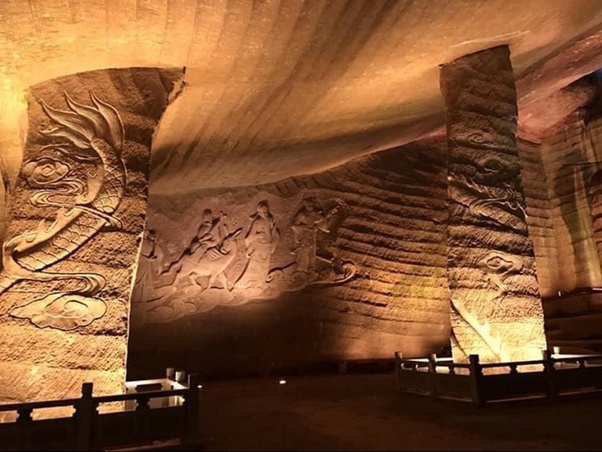
Although estimated to have been constructed around 2,000 years ago, it remains a mystery as to who constructed them and what they were used for.

These caves are now known as the Longyou Caves…
EMERGENCY! NATO TROOPS To UKRAINE, NUKE BLAST ON RUSSIAS BORDER, WILDFIRE TOXIC PLUME IN NEXT 24 HRS
Tex-Mex Four-Cheese Potato Casserole

Ingredients
- 1 (2-pound) package refrigerated mashed potatoes
- 1 tablespoon unsalted butter
- 1/2 teaspoon chili powder
- 3/4 cup shredded 4-cheese Mexican-blend cheese
- 1 teaspoon bottled minced garlic
Instructions
- Place the top oven rack about 5 inches way from the broiler element, and turn the broiler on high.
- Spoon the mashed potatoes into a microwave-safe, 2-quart casserole dish. Dot the potatoes with the butter.
- Sprinkle the chili powder over the potatoes.
- Sprinkle 1/2 cup of the cheese over the potatoes.
- Cover the casserole with plastic wrap, and cut 2 small holes in the wrap for ventilation.
- Microwave on HIGH for 4 minutes.
- Remove the plastic wrap, and stir in the garlic.
- Re-cover the dish, and microwave for 2 more minutes, or until completely heated through.
- Remove the dish from the microwave, discard the plastic wrap, and sprinkle on the remaining 1/4 cup of cheese.
- Place the casserole under the hot broiler for about 2 minutes, or until cheese melts and begins to turn golden.
- Serve immediately.
Yield: 6 servings
China’s Military POWER Explained | Just how strong is the Chinese military?
What is the most inspiring story you’ve ever heard? Why was it so powerful and meaningful to you at that time/place?
You’re a 19 year old kid.
You are critically wounded and dying in the jungle somewhere in the Central Highlands of Viet Nam .
Its November 14, 1965 . LZ (landing zone) X-ray.
Your unit is outnumbered 8-1 and the enemy fire is so intense from 100 yards away, that your CO (commanding officer) has ordered the MedEvac helicopters to stop coming in.
You’re lying there, listening to the enemy machine guns and you know you’re not getting out.
Your family is half way around the world, 12,000 miles away, and you’ll never see them again.
As the world starts to fade in and out, you know this is the day.
Then – over the machine gun noise – you faintly hear that sound of a helicopter.
You look up to see a Huey coming in. But.. It doesn’t seem real because no MedEvac markings are on it.
Captain Ed Freeman is coming in for you.
He’s not MedEvac so it’s not his job, but he heard the radio call and decided he’s
flying his Huey down into the machine gun fire anyway.
Even after the MedEvacs were ordered not to come. He’s coming anyway.
And he drops it in and sits there in the machine gun fire, as they load 3 of you at a time on board.
Then he flies you up and out through the gunfire to the doctors and nurses and safety. And, he kept coming back!! 13 more times!!
Until all the wounded were out. No one knew until the mission was over that the Captain had been hit 4 times in the legs and left arm.
He took 29 of you and your buddies out that day. Some would not have made it without the Captain and his Huey.
Medal of Honor Recipient, Captain Ed Freeman, United States Army, died at the age of 70, in Boise, Idaho.
May God Bless and Rest His Soul. I know he is sitting with our Lord telling each other stories!
I bet you didn’t hear about this hero’s passing,Medal of Honor Winner Captain Ed Freeman.
Now… YOU pass this along.
Honor this real hero.
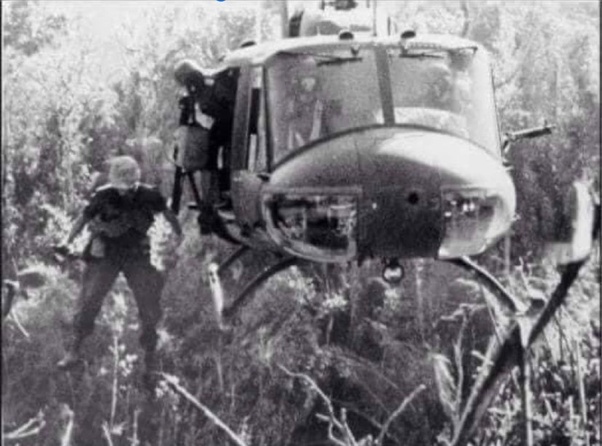
Why is the Chinese government spending so much to develop a network of modern canals for freight transportation in China?
I don’t have much time so I’ll sketch an answer.
Riverine transport is one of the lowest cost and efficient transport system, particularly goods and commodities. It is also a great tool for flood alleviation and irrigation, among others.
The best thing is, canals can be built with locks to overcome the natural gradient.
What the Chinese are doing with the canals, like they have been for thousands of years, is the same as what they have recently done with highways, electric grids and HSR, and that is to bring connectivity and modernization to areas previously unserved by services.
Take Guangxi, for instance. Even my grandma, a native of Guangdong who had left China for decades, told me people from Guangxi were dull and couldn’t compete with those from Guangdong. She stated Guangdong ate way better than their next-door neighbor.
Which is truth bundled with prejudice, like most folksy observations.
A major disadvantage of Zhuang-administered Guangxi is the flow of the rivers, which go east to discharge in the Guangdong coast. River and marine transport is the historical reason for Guangdong’s prosperity, and why Hong Kong remains a key seaport and entryway to China today.

The Pinglu canal pictured above will help Guangxi mirror the economic success further east. It won’t just be a canal but an entire marine/inland water transport system that’s integrated with the Pearl River delta.
The Zhuang are about to get a huge boost in their economy, and that includes a network of ports.
Just interesting things
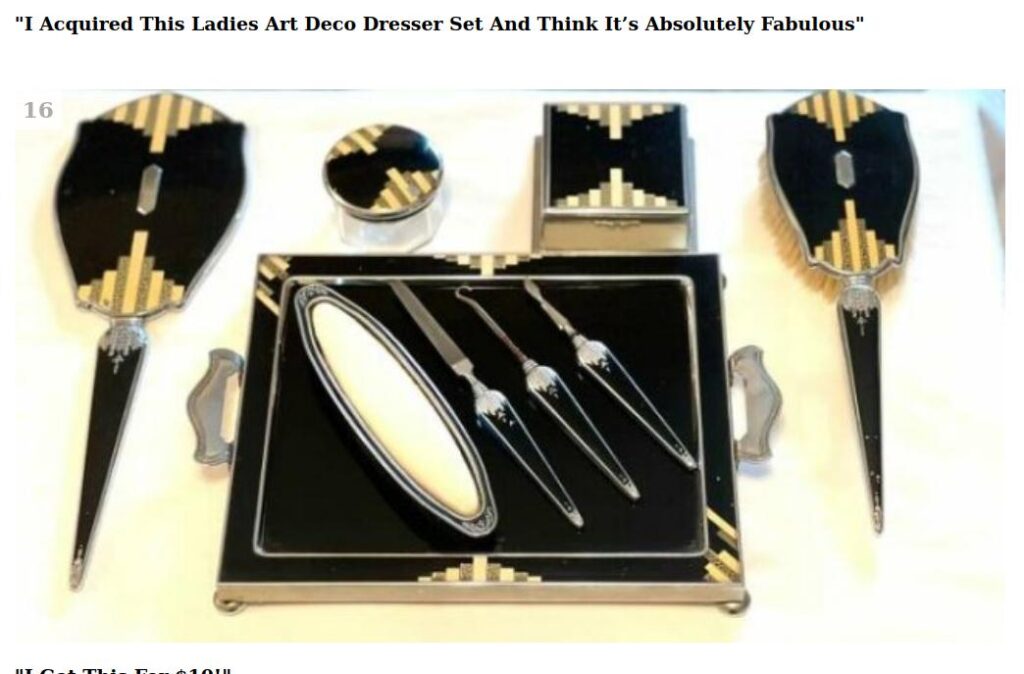

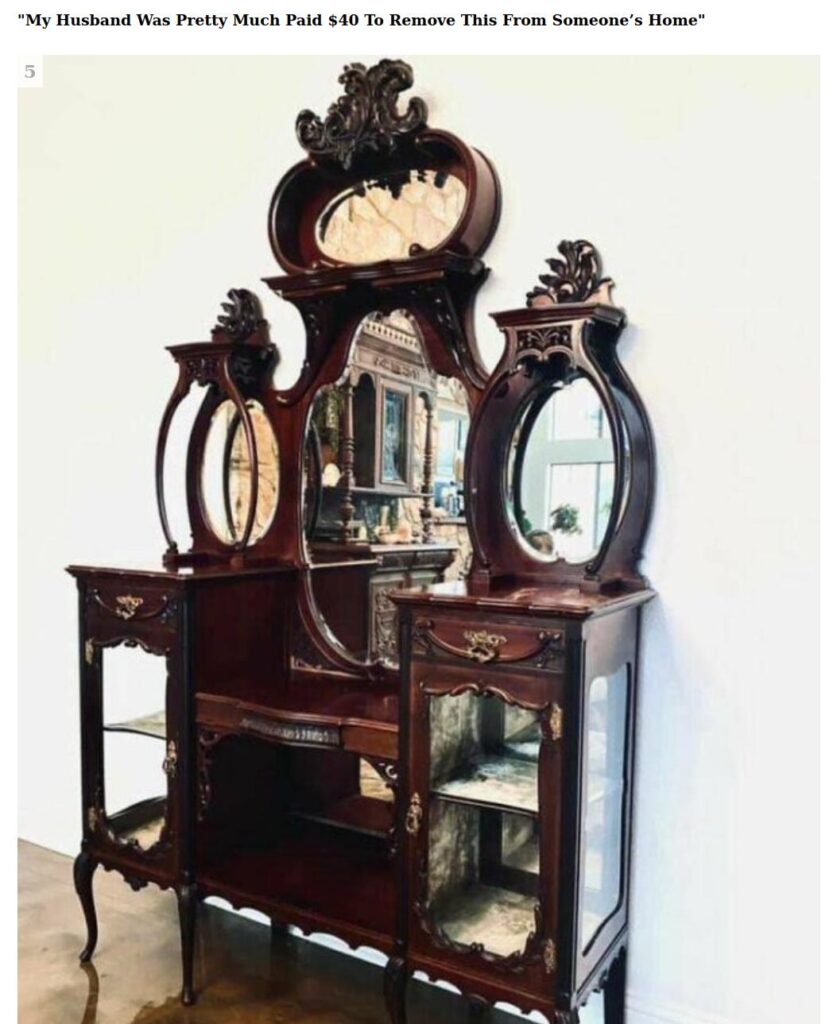




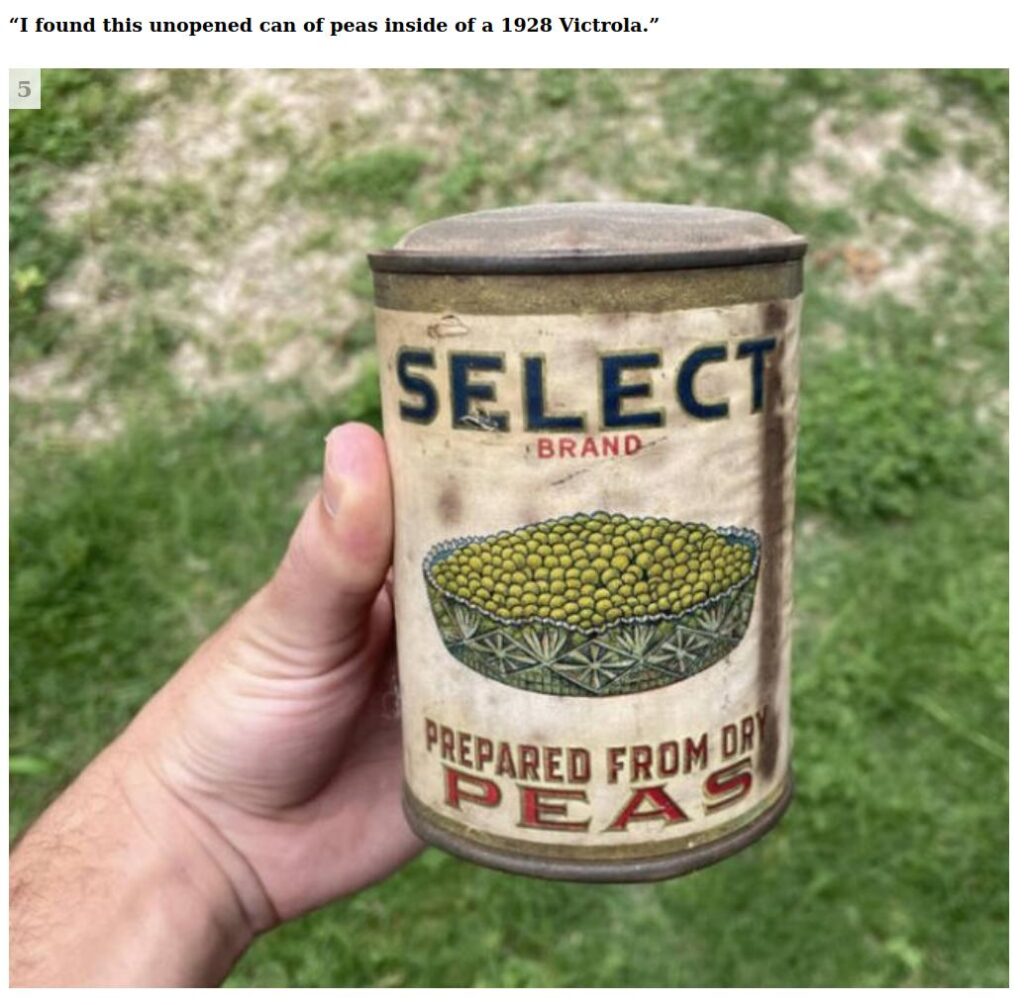








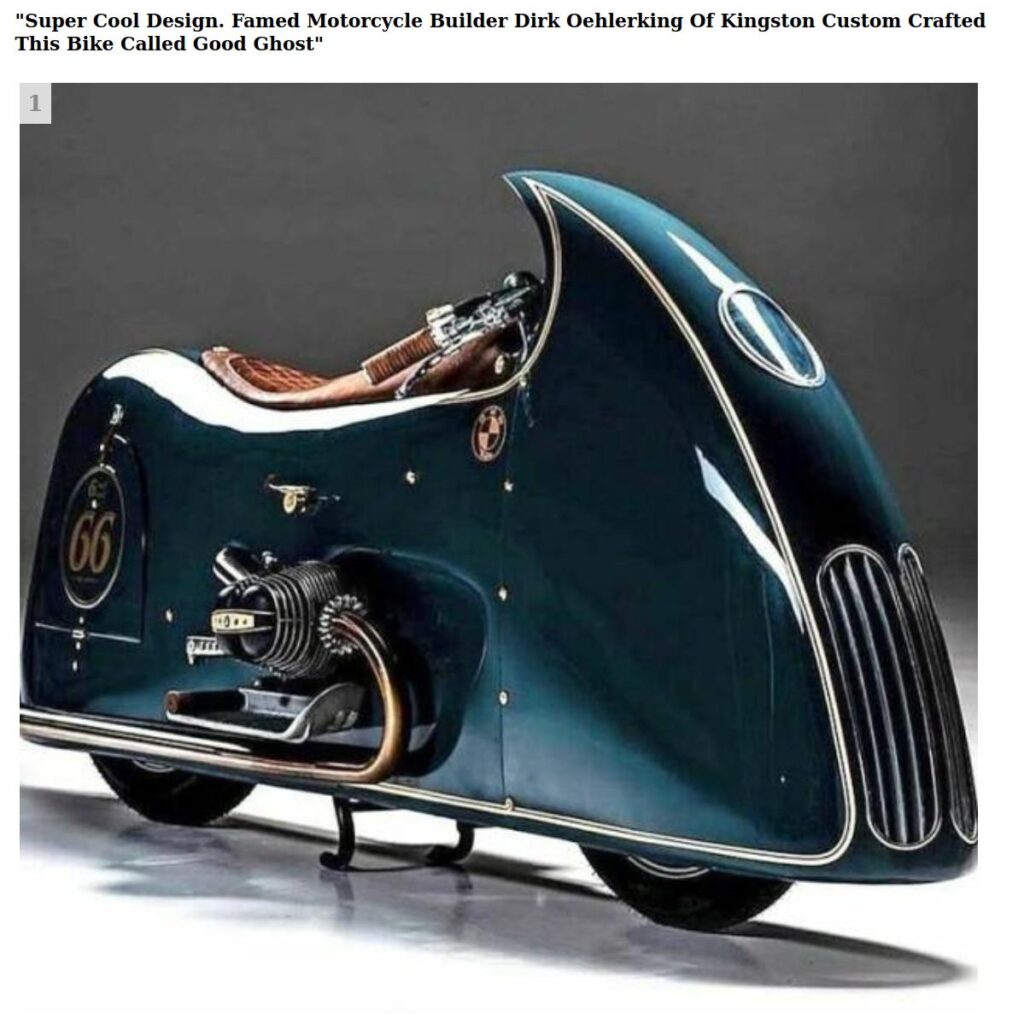
The Gruesome Truth About Gibbeting: Explored
The news that Micron’s products sold in China did not pass the network security review has caused a strong reaction in the US. This indirectly shows China’s decision has touched some Americans, demonstrating its power and producing additional effects. However, the true nature of the matter cannot be covered up by the US.
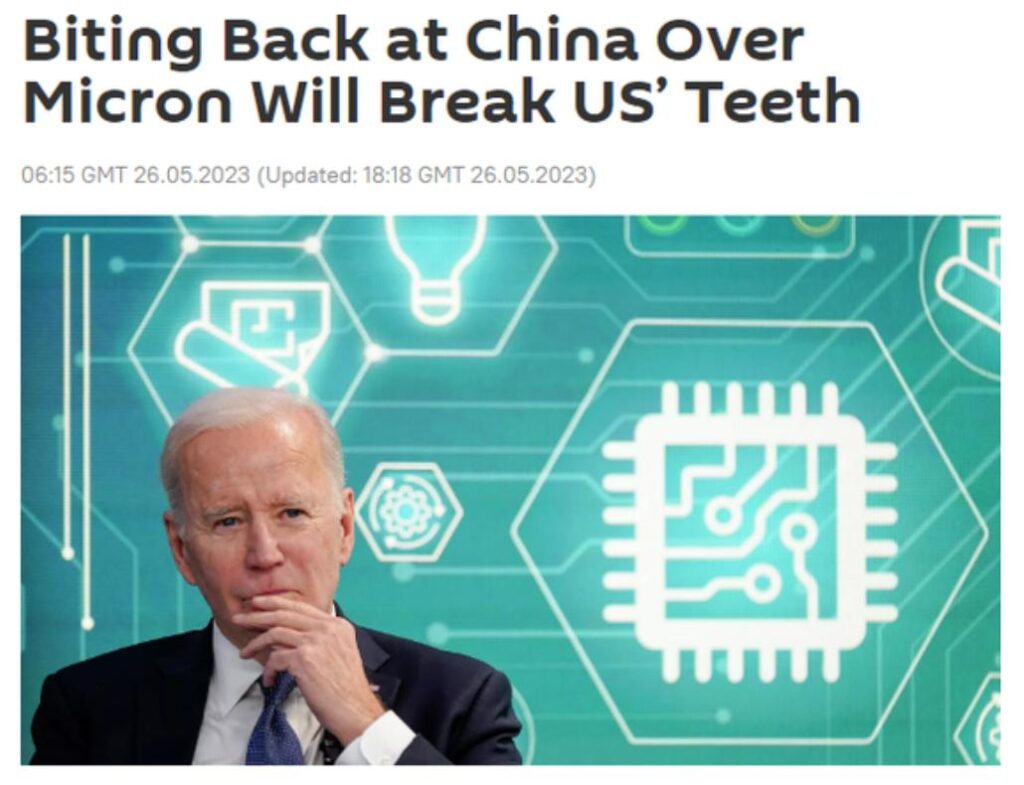
A US Commerce Department spokesperson said in a statement that this was a “raid and attack” on US companies, restrictions that “have no basis in fact” that would lead to “distortions of the memory chip market.” This is Washington’s consistent use of strong words to justify its actions. In fact, these words are just the phrases used to describe US actions of undermining free trade in recent years. But China is not the US, and will not learn bad behaviors from Washington.
The conclusion was made after a seven-week investigation by China’s General Administration of Customs and a network security review conducted by China’s Cybersecurity Review Office (CRO) in accordance with the law, which can withstand scrutiny. The review found that Micron’s products have serious network security risks, which pose significant security risks to China’s critical information infrastructure supply chain and affect China’s national security.
According to laws and regulations such as the country’s Cybersecurity Law, operators of critical information infrastructure in China should stop purchasing Micron’s products.
Besides assessing how much losses China’s decision will bring to Micron, the US also shows a certain degree of unease and insecurity, feeling that the “blast radius of this matter may be much larger.”
This is mainly because they have done many unscrupulous things to China and are very clear about what it means for the US to attack Chinese companies under the guise of “national security.” Therefore, they reflexively imagine that any action taken by China toward US companies is “retaliation.”
Of course, it is not a bad thing to make those who harm China’s interests feel uneasy, and it is a punishment they deserve. The Micron case is indeed the first time that CRO has conducted a review of a foreign company, but Micron is not the first company to undergo a security review by the office. The so-called “targeting foreign companies” is simply not true. The only thing it shows is that with the gradual improvement of China’s regulatory system, all market entities must comply with Chinese laws in their business activities. This is not about targeting specific companies. There will be no discrimination based on the different “identities” of the enterprise, neither will anyone be targeted nor given special treatment.
As one of the world’s largest manufacturers of semiconductor storage and imaging products, Micron’s products in China have long been said to have cybersecurity risks. In addition, Micron has always been known in the industry for its “aggressive competitive tactics” and has been accused of playing an instigating role in the US’ crackdown on Chinese technology, as well as being the US company that has dealt the most blows at Chinese chip enterprises. Micron itself knows clearly whether it has cooperated with Washington to export unsafe products to China, and this will undoubtedly determine its future in the Chinese market.
Take a look at US’ vicious and ruthless suppression against Huawei, and its greedy and lawless attempt to forcibly acquire TikTok. It has reached an extreme in trampling on the rules of free trade and the principles of fair competition. However, a legitimate and necessary action taken by China is used by the US to turn around and bite back, which is indicative of their guilty conscience and unreasonableness. They must be kicked in the teeth and be made to weigh the consequences carefully.
Big name retail stores now targeted by gangs in organized hits: Investigators | Nightline
This is the reality in the United States today.
Could the U.S Navy bring decommissioned ships back into commission if they wanted or needed to?
This question comes up a lot, and it comes from a lack of understanding of the difference between the post-WWII mothball fleet and the current state of the US Navy.
During World War II, the United States built the largest fleet in the world. Most of those ships were commissioned between 1943 and 1945. By September 1945, the US Navy operated over 6,700 ships, including 28 aircraft carriers, 23 battleships, 71 escort carriers, 72 cruisers, over 232 submarines, and 377 destroyers.
When the war ended, most of these ships were redundant, but most of them also only had 2 – 3 years of steaming on their hulls, so they were practically new. Thus was born the mothball fleet.
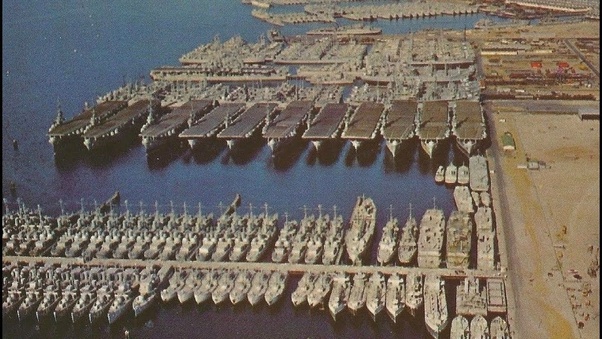
These ships were meticulously preserved and kept ready for recommissioning should the situation require it, and the US Navy lived off these collected assets for the next 25 years. These ships could easily be refurbished, upgraded, and sent to the fleet as needed, and they were.
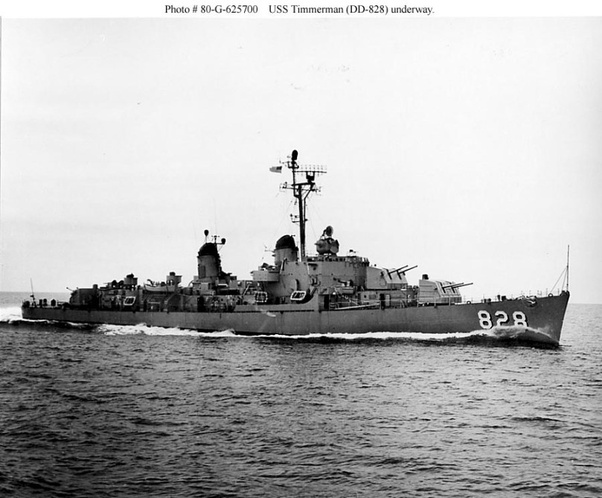
Gearing Class Destroyer during World War II
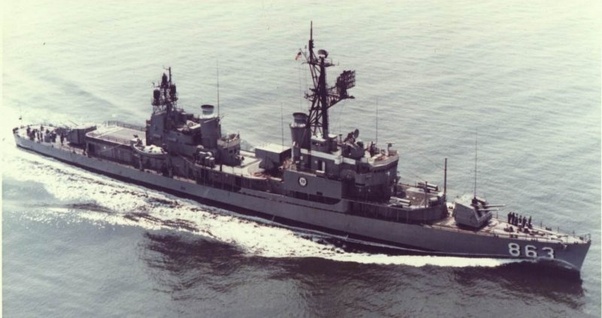
Gearing Destroyer with FRAM modifications (1960s – ‘70s)
The last of the Gearing Class destroyers were decommissioned from the US Navy in 1983.
When a modern US Navy ship is decommissioned, it has seen 25 to 30 years of hard use. The usable life has been squeezed out of it. The preservation process is nowhere near comprehensive as that done to WWII ships, mainly because everyone knows these ships are just being held until their final dispositions are decided. Most will be scrapped, and a few will be expended as targets.

Ticonderoga Class Cruisers stored at Philidelphia.
If it were practical or made economic sense to refurbish and upgrade these ships, they would have been kept in service. This is especially true of the 1950s through 1980s vintage ships that had aluminum superstructures on steel hulls that suffered from cracking and corrosion problems.
The Navy got everything out of those ships that they had to give.
BRICS is adding members, planning new currency to challenge US dollar
What is the most clever way you have seen someone respond to road rage?
A friend of mine was heading to town. At the time the highway was undergoing significant repair. This genius in a sports car was tailgating him so close that the headlights couldn’t be seen in the mirror. My friend has a Chevrolet S-10 Z-71… a truck built from the factory to drive thru rough terrain. The bridge at the time had all of the asphalt stripped off to the bare concrete, and the max speed was 35 mph. My friend just before the bridge sped up to 55 mph. The tailgater was so intent on camping his bumper that he failed to notice. I was shown the rear view footage and it was glorious. The sports car launched into the air with a spectacular spray of sparks to accompany the flight.
MARY HARTMAN E133
https://youtu.be/IP6B1r94FqE?list=PLCY6KBmKh0OMnSSlXyNCtAnrlyoIJzHyU
The US “won’t tolerate” China’s effective ban on purchases of Micron Technology memory chips and is working closely with allies to address such “economic coercion,” U.S. Commerce Secretary Gina Raimondo said on Saturday.

Raimondo told a news conference after a meeting of trade ministers in the U.S.-led Indo-Pacific Economic Framework talks that the U.S. “firmly opposes” China’s actions against Micron.
These “target a single U.S. company without any basis in fact, and we see it as plain and simple economic coercion and we won’t tolerate it, nor do we think it will be successful.”
China’s cyberspace regulator said on May 21 that Micron, the biggest U.S. memory chip maker, had failed its network security review and that it would block operators of key infrastructure from buying from the company, prompting it to predict a revenue reduction.
The move came a day after leaders of the G7 industrial democracies agreed to new initiatives to push back against economic coercion by China — a decision noted by Raimondo.

LOL
Imagine its just Micron that China has started with. The list is endless if China started continuing this process by doing the “Huawei” on the US.
Apple (iPhone) derives its 30% profit from China. What if Chinese started boycotting it and Tesla?
Their share value would plummet drastically, which if combined with other companies, would collapse the Nasdaq and S&P which has 40 + trillions market cap.
No wonder the US came to its own rescue and started a dialogue with China on semiconductors issue – whatever the outcome be.
“Tesla’s 5 Secret Successors” Who Mysteriously Disappeared
Will China survive in a globalist world if they keep their average citizen closed off from the rest of the world?
Which planet does this China reside on? Mars?
On planet Earth at least, China has the world’s largest:
- Overseas student population. (>600k)
- Traveling tourists. (>150m)
- Container traffic.
- Diplomatic missions. (>170 countries)
There are also Chinatowns (or significant Chinese population) in many cities around the world maintaining cultural and economic ties with the mainland.
China is the largest or second largest trading partner with more than 130 countries worldwide. She is also the proponent of the One Belt One Road initiative which seeks to build infrastructure connecting China with Asia, Africa, the Americas and Europe.
China is also busy signing free trade agreements and further opening up her domestic markets to FDI, as well as evolving legislation to international standards.
China has paid her dues as a member of both the UN and WTO, and by and large, has been an exemplarary global citizen.
All this points to a global player keen to be part of shared humanity, and not a hermit kingdom closed off from the world.
.
.

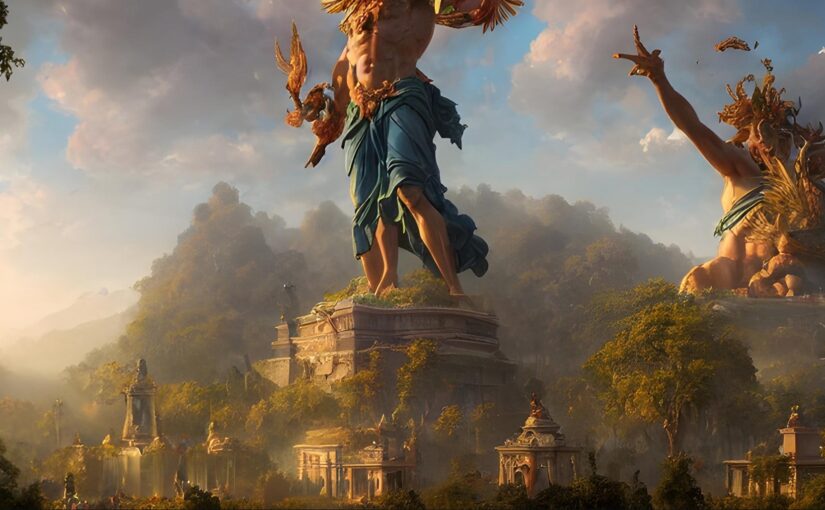

Free Energy, or anything that can make life more convenient and accessible for the everyman is severely suppressed in this hegemonic shithole of a civilization. Tesla, herself, made a few inventions that did extraordinary things in this life, and she was met with nasty, spontaneous oddities that ensured those technologies were forgotten about or shunted to a far-off worldline.
I think it’s safe to tell you this since I revealed my last incarnation to you. Remember that MtF trans-Isbe I mentioned to Eris days ago? She was Nikola Tesla in her last incarnation.
Nikola Tesla had essentially created Franz Bardon, and in this Worldline/Incarnation, collaborated together to reconvene about a lot of the zany stuff we did over the eons. In 2015, we colluded to make a new RP website with the money I got from a deposition so that we could make a pretty penny (though in actuality, I wanted to show off to the RP community I was in at the time by flexing all of the fancy code and art we would have made together as a huge brag and a Wimp gets the Last Laugh moment: this RP site consisted of a bunch of people who treated me like absolute shit and barely acknowledged me up until I freaked out their Queen Bee user with my weird and cryptic profiles one year later). And while my Tesla-Kin could not understand why I would go through this torturous undertaking that would, at best, embarrass everyone in RPH over how they mistreated me, she knew that something was pushing me desperately and there was no dissuading me; hence she left me to my own devices to get this shit outta my system and have my little fun in that small and weird chat site I obsessed over.
This actually happened, as surreal as this sounds. We are still technically on good terms, although we haven’t reconnected in 7-ish years and we both underwent a lot of nasty BS along the way.
The King of Bahrain showed off his new robot bodyguard. I did not think AI was that advanced yet but this looked real:
https://www.tiktok.com/@humoortum/video/7251721644266278171?q=body%20guard%20robot&t=1688614239373